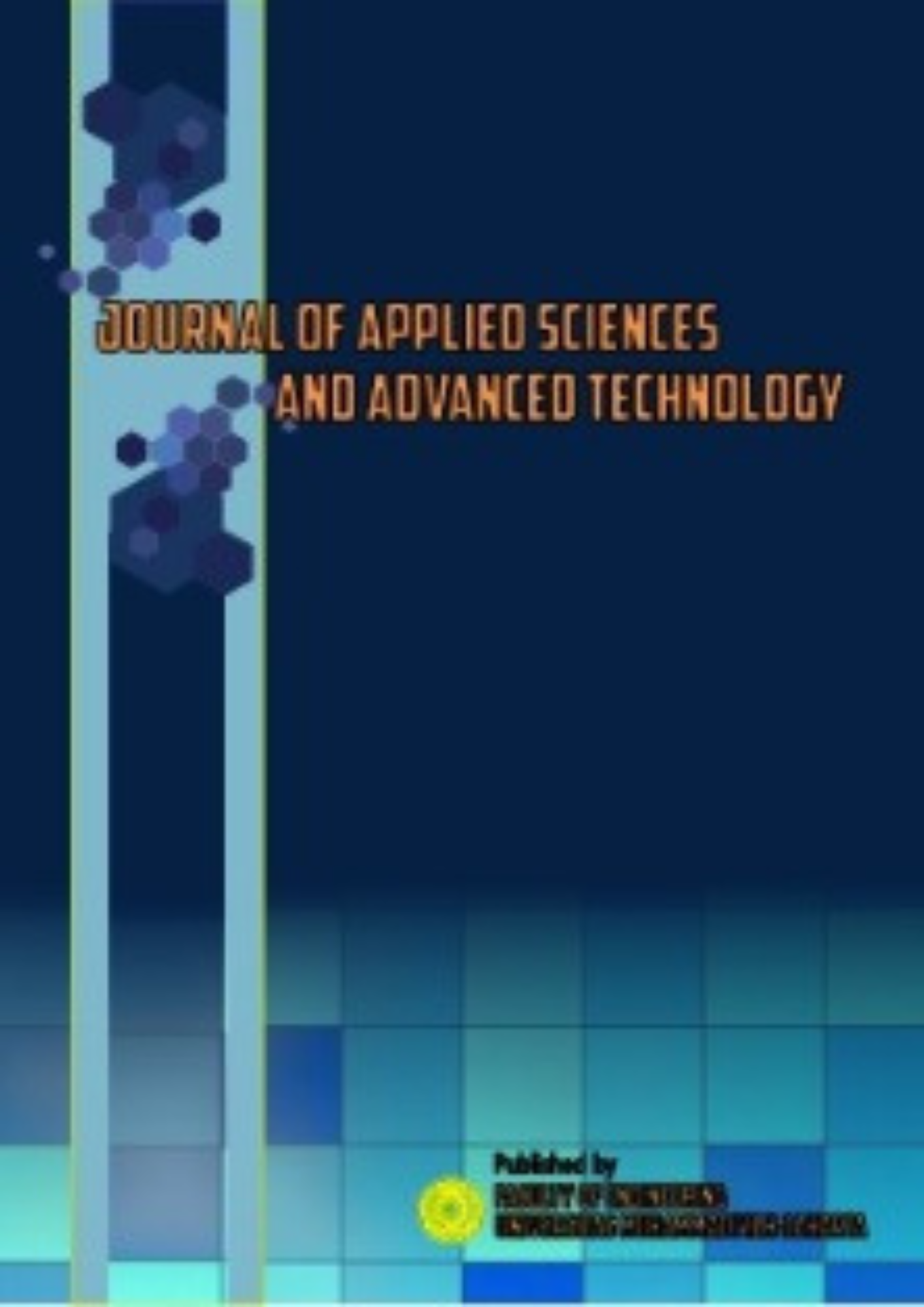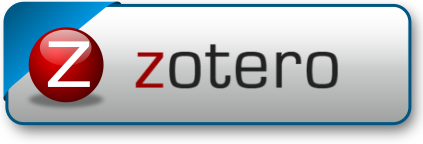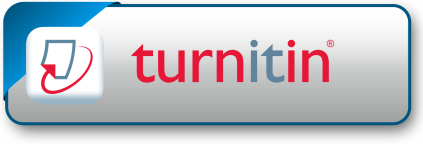Optimization of the Ultrasonic Extraction Process of Kasumba Turate (Carthamus tinctorius Linn) Using the Response Surface Metodology (RSM) Technique
DOI:
https://doi.org/10.24853/jasat.6.3.91-98Keywords:
Antioxydant activity, Ultrasonic Assisted Extraction, Kasumba Turate, Respon Surface Methodology, Central Composite DesignAbstract
Kasumba turate (Carthamus tinctorius Linn) or safflower is a traditional medicine used by South Sulawesians. Polyphenol compounds and antioxidant activity are active components of kasumbu turate. This component can be obtained through extraction. The goal of this study was to find the best conditions for extracting kasumba turate with high total phenol levels and strong antioxidant activity, as well as encapsulating the resulting extract. The ultrasonic assisted extraction (UAE) method was used to extract Kasumba turate with methanol, and the Responses surface Methodology method was used to optimize the extraction. Behnken Box Variations in composition solutions of 50, 60, 70, 80, and 90%, as well as time variations of 20, 30, 40, 50, and 60 minutes. A solvent ratio of was used for sample extraction 1: 1 using Methanol solvent and water, determined which is the best result of this variable, and continued by analyzing is a test analysis with Spectrophotometry, DPPH, and the best results of the variable are analyzed using Spectofotometry to see the content of flavonoid compounds in Kasumba Turate Flowers.Downloads
References
Purbowati, I. S.M., A. Maksum, A. M. Ritonga, and R. E.K. Kurniawan. “Optimization of Vitamin c Extraction of Roselle Petals (Hibiscus Sabdariffa) Assisted with Microwaves Using Response Surface Methodology.” Food Research 6, no. 6 (2022): 88–95. https://doi.org/10.26656/fr.2017.6(6).639.
Borah, Abhinav, Subbalaxmi Selvaraj, Sowmya R. Holla, and Shounak De. “Extraction and Characterization of Total Phenolic and Flavonoid Contents from Bark of Swietenia Macrophylla and Their Antimicrobial and Antioxidant Properties.” Arabian Journal of Chemistry 15, no. 12 (2022): 104370. https://doi.org/10.1016/j.arabjc.2022.104370.
Adamska, I., and P. Biernacka. “Bioactive Substances in Safflower Flowers and Their Applicability in Medicine and Health-Promoting Foods.” International Journal of Food Science 2021 (2021). https://doi.org/10.1155/2021/6657639.
Hossain, Md Anwar, Shammi Akhter, Md Hossain Sohrab, Farhana Afroz, Nadira Begum, and Satyajit Roy Rony. “Applying an Optimization Technique for The Extraction of Antioxidant Components from Justicia Adhatoda Leaves.” Engineered Science 24 (2023): 12–14. https://doi.org/10.30919/es913.
Shahabi Mohammadabadi, Shiva, Mohammad Goli, and Sara Naji Tabasi. “Optimization of Bioactive Compound Extraction from Eggplant Peel by Response Surface Methodology: Ultrasound-Assisted Solvent Qualitative and Quantitative Effect.” Foods 11, no. 20 (2022). https://doi.org/10.3390/foods11203263.
Zhang, Yangyang, Li Yu, Weifeng Jin, Chang Li, Yu Wang, Haitong Wan, and Jiehong Yang. “Simultaneous Optimization of the Ultrasonic Extraction Method and Determination of the Antioxidant Activities of Hydroxysafflor Yellow A and Anhydrosafflor Yellow B from Safflower Using a Response Surface Methodology.” Molecules 25, no. 5 (2020): 1–15. https://doi.org/10.3390/molecules25051226.
Wang, Yanyan, Wan Zhao, Yixiang Li, Hang Zhao, Xiaonan Ye, Tingli Li, Zhibin Wang, and Lili Huang. “Optimization of Ultrasound-Assisted Extraction Method for Phytochemical Compounds and Antioxidant Activities of Sour Jujube Extracts.” Food Science and Nutrition, 2022. https://doi.org/10.1002/fsn3.2971.
Ma’saud, Fatimatul Akmal, Nurazira Mohd Nor, Nur Nadia Dzulkifli, Ramya Vijayakumar, Siti Mazleena Mohamed, and Asiah Abdullah. “Extraction of Musa Acuminata Peels: Response Surface Optimization, Phytochemical Screening and Antioxidant Activity.” Malaysian Journal of Chemistry 25, no. 2 (2023): 52–62. https://doi.org/10.55373/mjchem.v25i2.52.
Hossain, Md Anwar, Shammi Akhter, Md Hossain Sohrab, Farhana Afroz, Nadira Begum, and Satyajit Roy Rony. “Applying an Optimization Technique for The Extraction of Antioxidant Components from Justicia Adhatoda Leaves.” Engineered Science 24 (2023): 12–14. https://doi.org/10.30919/es913.
Singhania, Nisha, and Aradhita Barmanray. “Optimization of Phenolic Compounds Extraction from Wood Apple (Limonia Acidissima L.) Fruit Using Experimental Design Methodology.” Current Research in Nutrition and Food Science 10, no. 2 (2022): 633–46. https://doi.org/10.12944/CRNFSJ.10.2.19.
Wang, Yanyan, Wan Zhao, Yixiang Li, Hang Zhao, Xiaonan Ye, Tingli Li, Zhibin Wang, and Lili Huang. “Optimization of Ultrasound-Assisted Extraction Method for Phytochemical Compounds and Antioxidant Activities of Sour Jujube Extracts.” Food Science and Nutrition, 2022. https://doi.org/10.1002/fsn3.2971.
Momuat, Lidya Irma, and Julius Pontoh. “Efektivitas Antioksidan Dari Ekstrak Bunga Kasumba Turate (Carthamus Tinctorius L.) Dan Potensinya Sebagai Antihiperkolesterolemia” 21, no. 2 (2021): 182–92.
Anwar, Khoerul, Farida Istiqamah, and Samsul Hadi. “Optimasi Suhu Dan Waktu Ekstraksi Akar Pasak Bumi (Eurycoma Longifolia Jack.) Menggunakan Metode RSM (Response Surface Methodology) Dengan Pelarut Etanol 70 %” 08, no. 01 (2021): 53–64.
Yusuf, Muhammad, N U R Fitriani, Usdyana Atthamid, S R I Indriati, Rahmawati Saleh, Mahyati Latief, and Akhmad Rifai. “Current Research in Nutrition and Food Science Optimization Ultrasonic Assisted Extraction (UAE) of Bioactive Compound and Antibacterial Potential from Sea Urchin (Diadema Setosum)” 08, no. 2 (2020).
Adhika, B, Hendrawati Ty, and Hasyim Uh. “Ultrasonic Extraction of Java Ginseng Leaves (Talinum Tri- Angulare (Jacq.) Willd) with Variables of Ethanol Solution Ratio and Extraction Time” 10, no. 1 (2023): 1–4.
Afrilia, Yonna. “KAJIAN OPTIMASI EKSTRAKSI FLAVONOID DENGAN BANTUAN GELOMBANG MIKRO PADA KULIT ALPUKAT (Persea Americana Mill.) MENGGUNAKAN RESPONSE SURFACE METHODOLOGY (RSM).” Journal Article, 2021, 1–85.
Deng, Junlin, Zhou Xu, Chunrong Xiang, Jing Liu, Lijun Zhou, Tian Li, Zeshen Yang, and Chunbang Ding. “Comparative Evaluation of Maceration and Ultrasonic-Assisted Extraction of Phenolic Compounds from Fresh Olives.” Ultrasonics Sonochemistry 37 (2017): 328–34. https://doi.org/10.1016/j.ultsonch.2017.01.023.
Riyadi, P. H., E. Susanto, A. D. Anggo, M. H. Arifin, and L. Rizki. “Effect of Methanol Solvent Concentration on the Extraction of Bioactive Compounds Using Ultrasonic-Assisted Extraction (UAE) from Spirulina Platensis.” Food Research 7 (2023): 59–66. https://doi.org/10.26656/fr.2017.7(S3).9.
Irsal, Muh, Muhammad Yusuf, Muhammad Tholhah Al Hayah, Andi Amar Ma’Ruf, Muhammad Rezky Mahmud, and Sri N. Rahayu. “Ultrasonic - Assisted Extraction and Microencapsulation of Bioactive Compound From Pigeon Pea Seed.” Bulletin of Pharmaceutical Sciences. Assiut 46, no. 1 (2023): 51–62. https://doi.org/10.21608/BFSA.2023.300760.
Machado-Carvalho, Liliana, Tânia Martins, Alfredo Aires, and Guilhermina Marques. “Optimization of Phenolic Compounds Extraction and Antioxidant Activity from Inonotus Hispidus Using Ultrasound-Assisted Extraction Technology.” Metabolites 13, no. 4 (2023). https://doi.org/10.3390/metabo13040524.
Downloads
Published
Issue
Section
License
COPYRIGHT POLICY
The author(s) of an article published in the Journal of Applied Sciences and Advanced Technology (JASAT) retains ownership of the intellectual property rights in work (s).
PUBLISHING RIGHTS
The author(s) of an article published in the Journal of Applied Sciences and Advanced Technology (JASAT) have unrestricted publication rights. The authors give the Journal of Applied Sciences and Advanced Technology (JASAT) the right to publish the article and designate the Faculty of Engineering Universitas Muhammadiyah Jakarta Publishing as the original publisher of the article.
LICENSING POLICY
JASAT is an open-access journal that follows the Creative Commons Non-Commercial 4.0 International License (CC BY-NC 4.0), which states that:

Under this license, the reusers must give appropriate credit, provide a link to the license, and indicate if changes were made. Users may do so in any reasonable manner, but not in any way that suggests the licensor endorses users or their use.
Please take the time to read the whole license agreement (https://creativecommons.org/licenses/by-nc/4.0/). As long as reusers follow the license conditions, the owner cannot withdraw these freedoms. The following components are included under this license:
 Attribution: Users must provide appropriate attribution, including a link to the license, and indicate whether or not they made any modifications. Users are free to do so reasonably, but not in a manner that indicates the licensee approves of their usage.
Attribution: Users must provide appropriate attribution, including a link to the license, and indicate whether or not they made any modifications. Users are free to do so reasonably, but not in a manner that indicates the licensee approves of their usage.
 NonCommercial: Users may not use the material for commercial purposes.
NonCommercial: Users may not use the material for commercial purposes.












_2.png)


1.png)

2.png)
